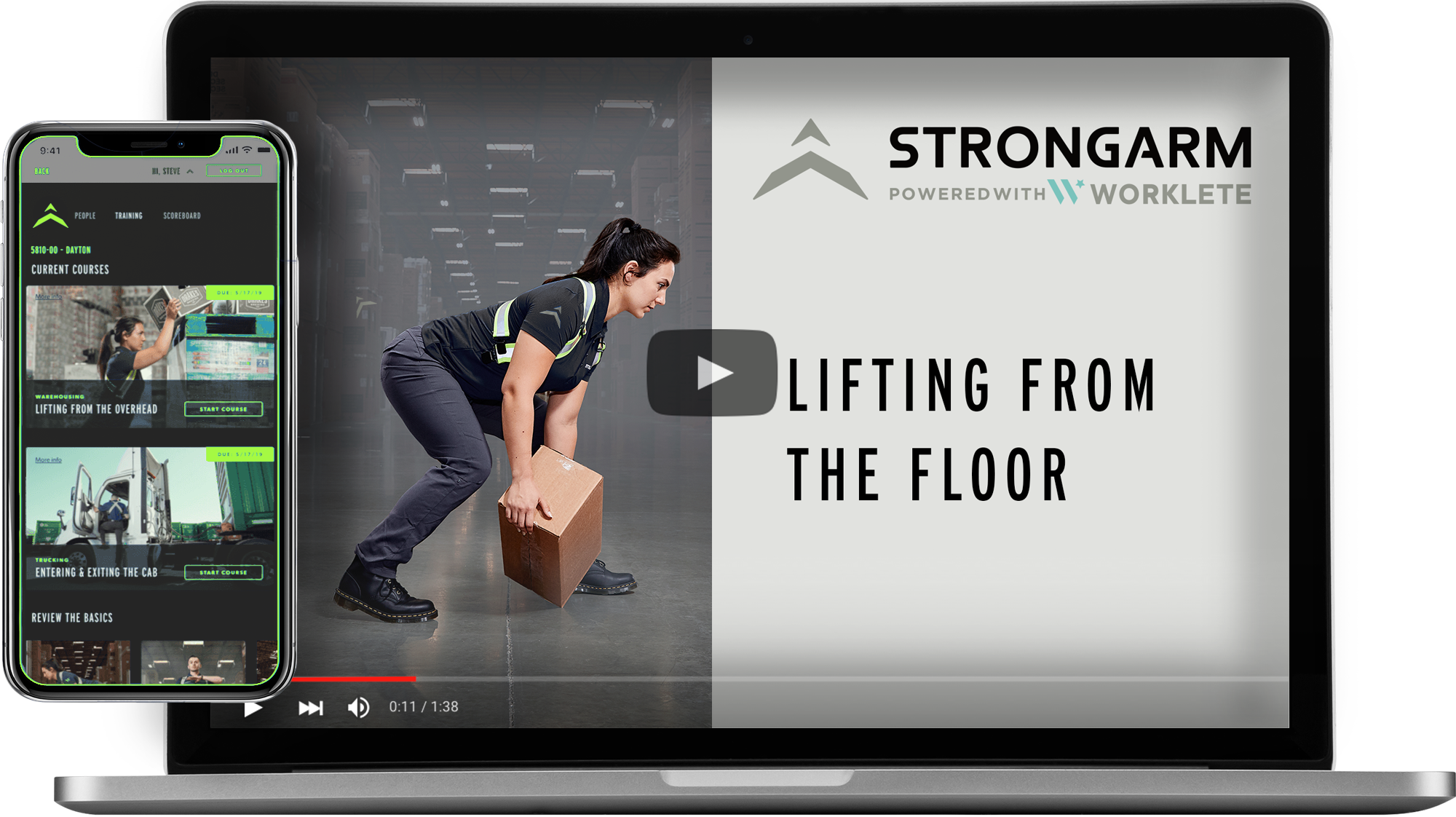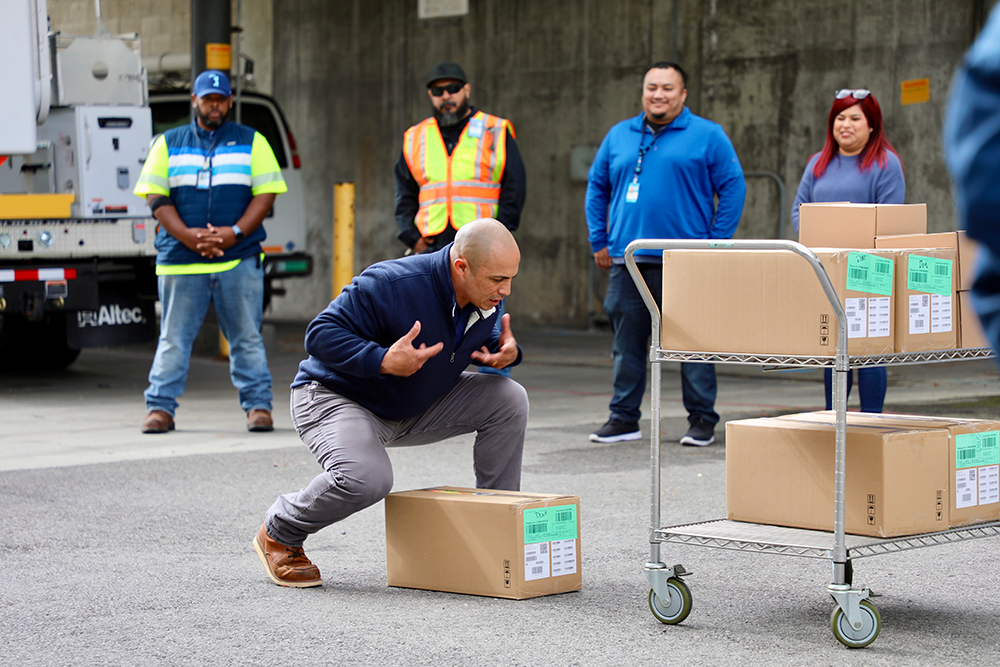Reducing Repetitive Strain Injuries
Repetitive strain injuries (RSIs) are one of the most prevalent ergonomic ailments experienced by Industrial Athletes™ — your employees. As you attempt to safeguard your employees while also boosting profitability, lowering health care and workers’ compensation expenses is more critical than ever.
One of the best ways to make a significant difference is through workplace ergonomics initiatives, which, when done correctly, can help avoid widespread injuries. Let’s examine some of the most prevalent repetitive strain injuries and how to avoid them.
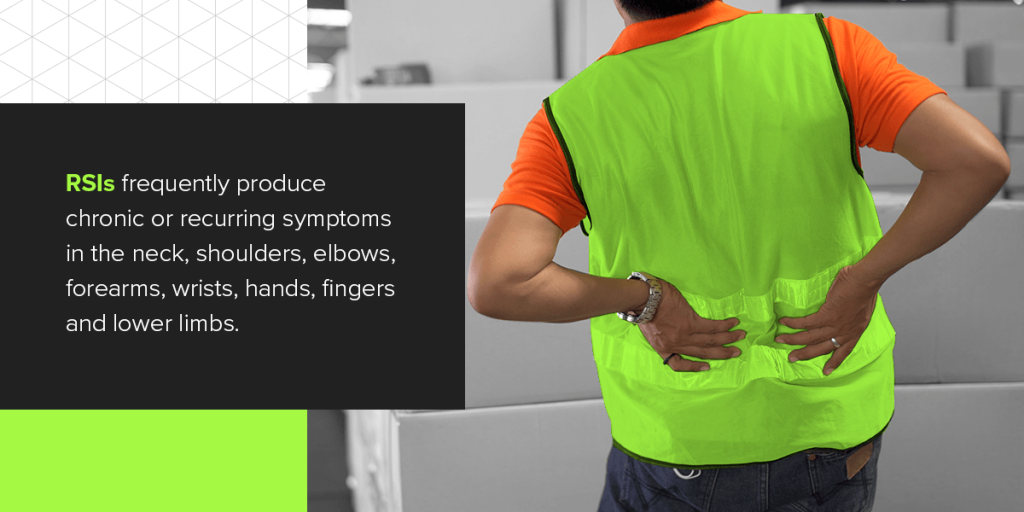
What Is a Repetitive Strain Injury?
As the name implies, repetitive strain injuries are a wide range of injuries due to repetitive mechanical motions, activities and tasks over a prolonged period with no breaks in between. This overuse of activities causes pain in an individual’s muscles, nerves, joints, tendons and tendon sheaths. RSIs frequently produce chronic or recurring symptoms in the neck, shoulders, elbows, forearms, wrists, hands, fingers and lower limbs.
The phrase “repetitive strain” can be misleading. RSIs, unlike other disorders, are difficult to classify since they have a range of origins and entail damage to many regions of the body. Repetitive injury, repeated motion injury, repetitive trauma, overuse injury, occupational musculoskeletal disorder and cumulative trauma disorder are among the terminology used to describe such injuries.
Force, overuse, rapid movements, excessive strain, static loading, unpleasant placement of limbs and holding one’s posture in an unnatural, confined or constricted position may cause RSIs.
Any frequently performed action or activity can result in an RSI. In the past, RSIs usually occurred in those participating in sports, thus the names “tennis elbow” or “golfer’s elbow.” Workers were typically unaware of these ailments, while symptoms associated with specific industries, such as “weaver’s cramp” and “threader’s wrist,” were described. However, RSIs are becoming more widespread across a wide range of jobs, from clerks to jackhammer operators, maintenance workers and typists.
Who Is at Risk of Repetitive Strain Injuries?
The following industries and professions are at a higher risk of developing RSIs due to repeated tasks:
- Manufacturing jobs, such as packing and assembly employees.
- Construction jobs, such as builders or those who regularly use computers.
- Warehouse and distribution jobs, such as load drivers and material handlers.
- Health care jobs, such as nurses and lab technicians.
- Retail jobs, such as shelf stockers and cashiers.
- Fast-moving consumer goods jobs, such as stock controllers and sales managers.
- Transportation jobs, such as taxi drivers or bus drivers.
- Office jobs, such as those who often type, file and use a computer.
- Entertainment jobs, such as musicians and dancers.
Whether you have an office job and sit at a desk, typing on a computer all day or you have a job in the warehouse and distribution industry, carrying light to heavy loads each day — anyone can run the risk of experiencing an RSI. While repetitive strain injuries are avoidable, most employees are unaware of the health risks that their job obligations bring, which may place a considerable amount of strain on the muscles, ligaments and joints.
What Are The Symptoms of Repetitive Strain Injuries?
Symptoms can be difficult to detect at first, and employees may only notice them when doing a specific repeated activity or action. RSI symptoms can range from moderate to severe and often appear gradually. However, if left untreated, these symptoms can become chronic and cause extended periods of suffering. Pain in one portion of the body might spread to other sections connected to it — for example, wrist pain can spread to the forearm and shoulder joint.
General RSI symptoms may include:
- Cramps
- Numbness
- Pain, aches or tenderness
- Stiffness
- Stinging, tingling or burning sensations
- Swelling
- Throbbing
- Weakness
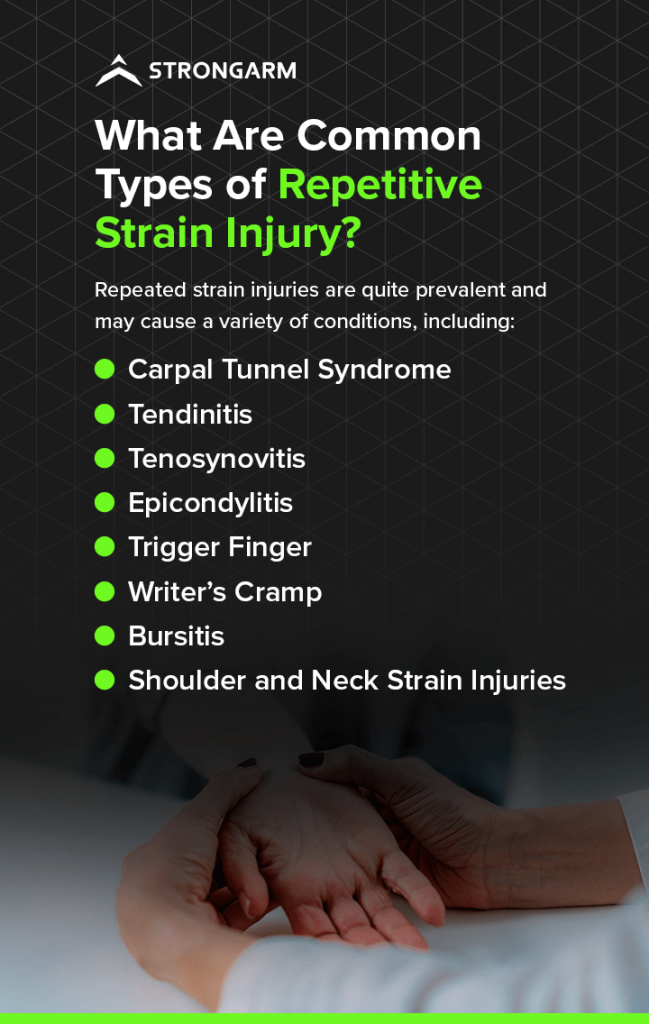
What Are Common Types of Repetitive Strain Injury?
Repeated strain injuries are quite prevalent and may cause a variety of conditions, including:
Carpal Tunnel Syndrome
Repetitive finger motions, extremely tight grips, wrist twisting, excessive use of the index finger and uneven work movement can all contribute to carpal tunnel syndrome (CTS). Simple CTS arises when fluid or thicker tissues compress the median nerve. Employees who undertake modest but frequent repetitive motions of the wrist and fingers are most vulnerable to this injury.
CTS symptoms may include:
- Pain, numbness and tingling in the wrist
- Wasting of wrist base muscles
- Clumsiness of the hands
- Loss of grasping ability
- Swelling of the wrists and hands
- Impaired thumb and finger dexterity
Soreness in the wrist or forearm may occur in the early stages of CTS. In later stages, the discomfort can be severe, restricting the mobility of the wrist or fingers. Finger motions may be jerky in the advanced stage, and the thumb and fingers may lock in the last stage.
Tendinitis
This ailment is one of the most common types of repetitive strain injuries. Forceful and repeated movements irritate and inflame the tendons, causing inflammation and thickening. The thickening of the tendon might eventually lock and impede muscles’ and bones’ mobility.
Tendinitis comes in a variety of types. Rotator cuff tendinitis affects the tendons that move the shoulders and rotate the arm in and out. Peritendinitis is an inflammation of the region around the tendons and muscle junction.
Tenosynovitis
Rapid and repetitive movements, such as typing, and the repetitive twisting of the forearms and hands, such as playing instruments, may cause tenosynovitis. Tenosynovitis is an infection of the tendon sheaths, generally occurring in the hand or wrist. The continuous movement depletes the lubricant that protects the tendon sheaths or produces low-quality lubricant.
When the amount of lubricant cannot meet the demand, the tendon and sheath rub against each other and become inflamed. Movements become uncomfortable and might result in a cracking sound known as crepitus. Tenosynovitis symptoms include discomfort in the wrist and forearm that can progress up the elbow to the shoulder. There may be swelling and a definite breaking sound.
Epicondylitis
Epicondylitis is also known as “tennis elbow” (lateral epicondylitis) or “golfer’s elbow” (medial epicondylitis). Epicondylitis refers to muscle and tissue strains in the elbow joint region. The bending of the wrist against a resisting force, repeated strain of the forearm and lifting objects with the hand held downward and the forefinger in a grasping position are all common causes of epicondylitis. Tenderness and swelling in or near the elbow may occur, and discomfort may radiate from the elbow.
Trigger Finger
A trigger finger is the thickening of the finger tendons, making straightening the fingers after bending challenging. Tasks that require a wi0de grip on a handle while squeezing might cause this issue.
Writer’s Cramp
The repeated activity of typing or physically writing can cause hand or forearm cramping. Damaged nerves may result in uncontrollable finger movements.
Bursitis
Bursitis is an inflammation of the bursa — a fluid-filled fibrous sac commonly seen in high-friction places, such as around joints or where a tendon passes over a bone. Excessive, repetitive and prolonged pressure or jolts on joints may cause bursitis, resulting in extreme discomfort and limited mobility. Someone can experience bursitis in their:
- Hip
- Shoulder
- Elbow
- Knee
- Heel
- Big toe
Shoulder and Neck Strain Injuries
Due to repetitive labor, two tendons in the shoulder region might become stressed. One of the tendons runs over the top of the shoulder joint, lifting the arm away from the side. The other passes in front of the shoulder joint and aids with forward and upward arm movement. Work that requires moving or lifting the arms away from the chest might result in muscular overload.
Shoulder muscles connect to neck muscles. Neck muscles control the head’s position and raise and brace the shoulders. Like shoulder muscles, the neck muscles are always in use. Pain in both locations during rest, stiffness in the neck and headaches caused by the neck, muscular tightness and sore spots in the muscles are all symptoms. Shoulder nerves go down the arm to the hands — therefore, injuries to the shoulders may also cause discomfort elsewhere.
What Causes Repetitive Strain Injury?
Any job that requires a person to be in an “unnatural” position might result in repetitive strain injuries. The following are the classifications of repetitive strain injuries:
- Rapid movement injuries
- Forceful movement injuries
- Static loading injuries
Too little or too much movement while handling light or heavy loads can cause these injuries. RSIs can have numerous causes. A maintenance employee who uses a screwdriver may have discomfort due to the repetitive use of force while working in an awkward position. Employees in the office may sit in awkward positions with little wrist support and utilize fast finger motions on poorly constructed keyboards.
The type of work activity, tools, equipment and the workstation all connect to RSIs. For example, most tools and equipment may fit the “average man,” — which can cause RSIs in individuals who may not fit in this bracket of “average.”
Overworking can also result in RSIs. Our bodies are not built to labor faster, more vigorously, indefinitely or without rest. This spiraling effect and stress may result in injuries that may never heal unless separated from their causes for an extended period. Because of the consequences on their musculoskeletal system, these employees may sustain various significant injuries.
Other causes of repetitive strain injuries can include:
- Excessive labor hours
- Lack of job diversity
- Increased work speed
- Poor sitting or standing posture
- Poorly maintained equipment
- Frequent vibration from tools
- Stress
- Working in cold weather

Are Repetitive Motion Injuries Preventable?
Repetitive strain injuries are preventable. However, while most of us understand and identify the causes and symptoms of RSIs, we fail to take preventative actions because we believe they will not happen to us. Ignoring the signs will not make RSIs go away. To keep the symptoms at bay, take proactive measures.
Here are some preventable measures your employees — or Industrial Athletes™ — can take to help prevent RSIs:
- Maintain good posture during work.
- Take regular small breaks from long repetitive tasks.
- Try breathing exercises when stressed.
- Try stretching multiple times a day.
- Perform proper lifting techniques.
- Work at a consistent pace.
- Wear the correct personal protective equipment.
- Change your stance or discontinue an activity as soon as you feel pain or strain.
- Take enough time to heal and recover your body — there’s no need to push through the pain.
- Change postures regularly if possible — if not, take regular breaks when working in uncomfortable situations.
- Learn about and implement stretching and strengthening exercises suited to the position.
- Wear proper anti-vibration gloves when using handheld power tools.
- Utilize appropriate tools for the task at hand and use them as intended.
How Can Repetitive Strain Injury Be Prevented in the Workplace?
Because RSIs have several causes that affect a range of locations, your workplace needs a thorough prevention program. These programs should make the work suit the individual rather than the other way around. These are some repetitive strain injury prevention methods employers can implement:
- Education programs: Thorough training and education programs should be made available explaining the causes and prevention of RSIs. Employees should be aware of the signs and symptoms of such injuries to prevent further harm.
- Reporting system: A reporting system can help identify early symptoms to treat RSIs early — employees should not endure the discomfort.
- Time-off and break policies: Regular breaks and time-off policies are essential. Removing the repetitive movement source can help the healing process begin. Employees shouldn’t feel they need to endure the pain or discomfort — this may exacerbate the situation. Breaks policies will help break up the series of repetitive motions. Policies can include job rotations, job enlargement and repeated rest breaks.
- Investigative programs: An investigative program can examine and document all workplace-related pain complaints to identify probable causes of RSIs. A full-scale ergonomics research can look at movement speed, force, direction, movement frequency, worker rate, worker posture and stress.
- Tools evaluations: Evaluate and customize tools to match the employee or specific work activity. Some instruments, for example, can be built with smaller grips that need less force to operate, putting hands and wrists in the same position as when rested at one’s side. Always keep tools and equipment in optimal working conditions. Tools in each department need to be ergonomically friendly to prevent RSIs from occurring.
- Management inclusion: The ultimate objective should be to instill a culture of good and healthy work practices in each team. Managers are corporate leaders who will be ergonomic change pioneers in your workplace, building a culture of safety that can improve employee behaviors.
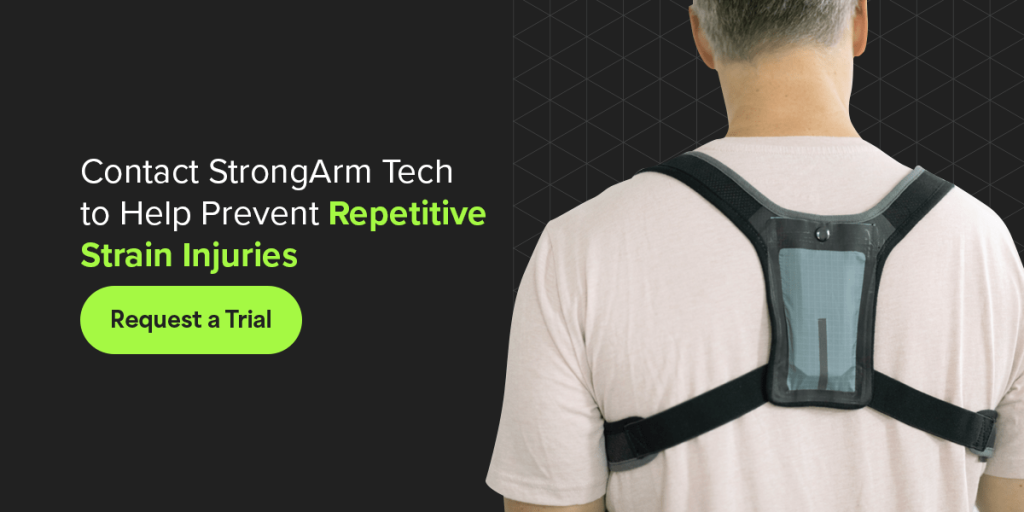
Contact StrongArm Tech to Help Prevent Repetitive Strain Injuries
Warmups and stretching can help reduce repetitive strain injuries, but their usefulness can only go so far. More than anything, Industrial Athletes™ should practice proper lifting and movement techniques to maintain their health and safety. However, when working for prolonged periods, proper posture may be quickly forgotten, resulting in repeated strains — one of the most common ways warehouse employees get injured on the job.
Our goal at StrongArm is to keep Industrial Athletes™ safe through our SafeWork System — an end-to-end workforce optimization and risk management solution. Our safety wearables are programmed to detect dangerous bends and twists. Sensors help Industrial Athletes™ move their bodies safely so they don’t have to think about it, gathering data points while they work to help create a safer workplace environment.
Request a trial online today for more information and learn how to prevent repetitive strain injuries!


